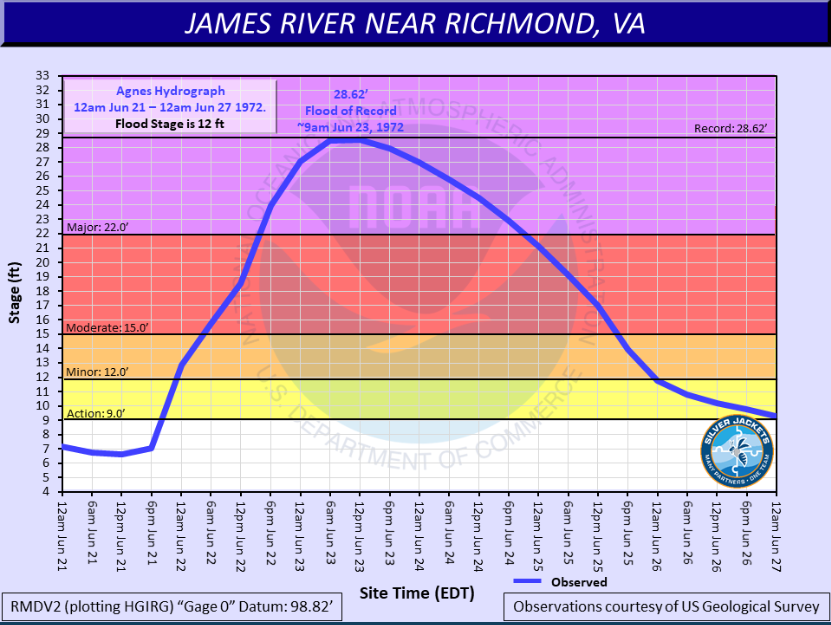On June 14, 1972, a tropical disturbance was first detected over the Yucatan Peninsula. Later that afternoon, a tropical depression was born. Two days later, the depression strengthened into a tropical storm and was given the name Agnes — a name that many remember.
Meteorologically speaking, Agnes was not a strong hurricane. It made landfall June 19, 1972 as a category 1 hurricane in the Panhandle of Florida. From there, the system weakened, before moving off the North Carolina coast and reforming into a tropical storm on June 21. The National Hurricane Center’s storm report on Agnes says that it then turned northwestward and made landfall at just under hurricane strength on June 22 near New York, N.Y.
Agnes dropped 10-15 inches of rain along its track. The heaviest fell along the Appalachians, where the mountainous terrain enhanced the flood threat. Totals of 10 inches to 15 inches were common from New York into Pennsylvania, Maryland and Virginia. The most rain fell in Schuylkill County, Pennsylvania — with 19 inches of rain measured!
Part of the reason Agnes produced such heavy rain inland was that it was interacting with a upper level trough as it made the northwest turn towards the northeast United States. This upper level trough provided the lift needed to produce abundant rain showers and thunderstorms on the western side of the track. Moisture from the Atlantic Ocean was pulled inland, and the stage was set for a significant flooding event.

That amount of rain led to devastating flooding. From New York to Virginia, flood records were set — many of which still stand today. NOAA’s Mid-Atlantic River Forecast Center says that “even 50 years later, across the Mid-Atlantic, more river flood records were set during Agnes than in any other storm.”

In Virginia, Agnes was known for its flooding. Heavy rain in the mountains and upstream led to tremendous flooding across much of the state. Combined with the impact from heavy rain in the days prior, this rain was too much for the creeks, streams and rivers to handle.
In Farmville, streets and businesses were inundated with flood waters.
In Richmond, the James River rose to its highest flood stage on record — an incredible 28.62′. Since then, no other flooding event has even come close to breaking that record. Flooding occurred across downtown with significant impacts to the water purification plant, the power station and roads across the city.

Agnes caused 122 deaths across the United States. Nine were in Florida, where the storm first made landfall. The rest were from flooding. Billions of dollars in damage occurred. Seven additional deaths occurred in Cuba.
As part of the 50-year anniversary of Agnes, people are sharing their stories and pictures on social media with #Agnes. You can view some of them on Instagram, Facebook and Twitter. Do you have an Agnes story?
Agnes is a great reminder that significant impacts from tropical cyclones can and do occur inland — away from the coast. No matter where you live – you should learn your flood risk and consider having flood insurance.
Special thanks to NOAA, the US Army Core of Engineers, the Library of Virginia and FEMA for their help with this article.











































































































